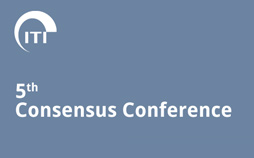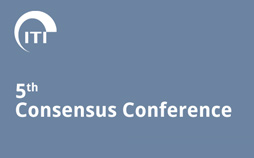
Influence of Restorative Procedures on Esthetic Outcomes
Consensus Statements
The available literature does not demonstrate that esthetic outcomes can be improved by:
- The use of surgical templates (surgical guides)
- The utilization of implant-retained provisional prostheses
- The timing of provisional implant-retained prosthesis
- The mode of prosthesis retention (cement- or screw-retained)
There is limited evidence (one study) reporting improved esthetic outcomes (color matching) in implant dentistry associated with ceramic abutment/prosthesis combination.
Esthetic outcomes can be improved (mean, 0.3 mm on the midfacial mucosal margin) by the presence of a horizontal offset, or platform switch (smaller abutment diameter).
Treatment Guidelines
The use of surgical templates, developed from a restoration-driven approach that communicates the optimal implant position in 3D respecting the comfort zones as reported in previous ITI publications, is recommended.
The use of provisional implant-retained restorations in the esthetic zone is recommended. Provisional restorations enhance communication between all members of the treatment team and the patient. They should be anatomically and functionally correct, and respect the emergence profile of the restoration apical to the planned mucosal margin (highest convexity) to allow for maximum tissue volume. Screw retention of the interim restoration is considered advantageous for multiple reasons (retrievability, tissue shaping, tissue health and maturation, ease of modification).
Immediate loading or restoration of an implant cannot be recommended as a routine procedure because risks are elevated and esthetic outcomes are variable. In agreement with previously published ITI documents, early loading of dental implants in the esthetic zone is recommended.
In sites of elevated esthetic risk, a horizontally offset (platform switched) implant/abutment design is advantageous for single-tooth replacements. Further, an oversized implant platform and prosthetic components must be avoided to respect the interproximal and facial regions of the site.
The abutment and prosthesis material are a patient- and site-specific choice for the clinician. Provided that the material chosen is of high quality and documented, the design of the abutment and/or prosthesis is more critical than the material chosen, for reasons including:
- Controlling emergence profile
- Material properties and strength
- Access to finish lines
- Retrievability
In patients with thin tissues, a tooth-colored abutment and/or final prosthesis emerging through the tissues can offer esthetic advantages. When the implant angulation allows, screw retention of the prosthesis offers clinical advantages.
Treatment Guidelines
Downloads and References
Related items
Share this page
Download the QR code with a link to this page and use it in your presentations or share it on social media.
Download QR code